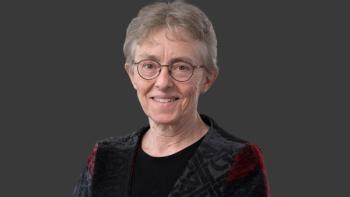
Wandering Off the Main Road: Clinical Pathways for Cancer Patients
As insurers, clinicians and the U.S. government attempt to slow the increasing rise of health care costs, many experts have identified the tool entitled “clinical pathways” as a solution. Oncologists who adhere to such pathways are thought to improve patient care and reduce expenses.
Who can I turn to when nobody needs me?
As insurers, clinicians and the U.S. government attempt to slow the increasing rise of health care costs, many experts have identified the tool entitled “clinical pathways” as a solution. These pathways are defined as a set of evidence-based guidelines on how to efficiently manage cancer patients throughout the entire course of their illness, until death or remission. Oncologists who adhere to such pathways are thought to improve patient care and reduce expenses. Just as the Gods of ancient Greece molded the lives of their mortal subjects, pathways foresee the future of typical cancer patients and suggest the right medicines, tests and clinical decisions-the pathway-to produce the best outcome at the lowest expense, hopefully proving that standardized care is superior to anecdotal.
Not surprisingly there is a problem with this model, namely when “circumstances beyond our control” produce a deviation from the pathway-known in the jargon as a variance. On paper variances are a nuisance to the goals of unified care. They are a lightning strike to the tranquility and flow of the pathway and portend a higher overall cost. Even worse, variances often appear when patients are faring poorly. Although clinical pathway designers expect variances and use them to improve the next version of the pathway, such adjustments take place at the convenience of the planners and far from the patient’s bedside.
In the meantime, we “providers” of primary medical care deal with reality, where variances go by different names, such as vomiting, fever, drug shortages, pulmonary emboli, frustration, grief. Woe to oncologists who are not skilled at facing such pressures. There are no tips in the clinical pathway on how to manage unexpected complications. Who therefore solves the problem? Who is in charge here anyway, the pathway or the doctor?
With no star to guide me and no one beside me
I’ll go on my way, and after the day, the darkness will hide me
The value of clinical pathways fizzles when a crisis occurs, and at that time oncologists must adhere to their own guidelines. These are simply said:
Listen to the patient-be mindful. Use your powers of deduction and intuition. Look simultaneously for clues and solutions to the problem. Be creative in your plan. Stick with common sense. Keep your emotions out of the way. When all else fails, don’t be afraid to bond with patient and family. Even if sadness is all that remains of a situation, we are grateful when our doctor shows that we’re all in this together.
But who can I turn to if you turn away?
Clinical pathways may be the future of cancer care, but when contingencies occur, even if there are no foreseeable solutions, our response must always be: “You can turn to me.”
Newsletter
Stay up to date on recent advances in the multidisciplinary approach to cancer.



















































































